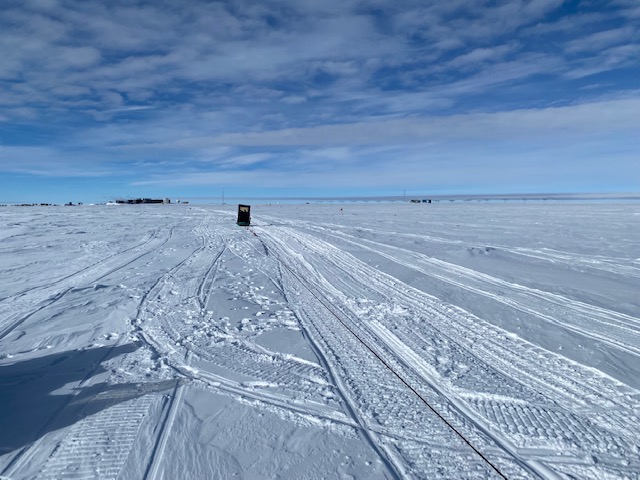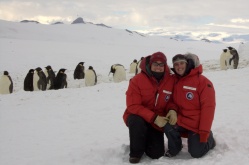Ice Penetrating Radar
Our main goal this field season is to “image” the West Hercules Dome area. To do this, we use radar. Ice is almost transparent, meaning it doesn’t absorb electrical energy at some frequencies. If this seems unfamiliar to you, think about your microwave. It works really well warming up anything that has water in it, whether an old cup of coffee or the cheese in a quesadilla. But if you’ve ever tried to thaw hamburger meat, you know just how long and poorly that goes. That is because your microwave uses energy at a wavelength that is absorbed by water, which causes it to warm, but not by ice.
Our main radar system, the High Frequency system, uses 3 MHz, so different than your microwave, but a frequency that the ice does not absorb and is able to look all the way through the ice to bed. This actually was first really noticed when airplanes were flying over Greenland on their way to help fight World War II in Europe. And it was a problem. The ice sheet would not reflect the plane’s radar clearly, with some of energy reflecting from the surface, but some reflecting either off the internal layers in the ice or the bed, and arriving later than energy reflected from the surface. This led to crashes as aviators thought they were higher off the surface than they were. But what is a problem for some applications, can be used as an advantage for others.
The HF radar requires a really long set up. There are two antennas, each with two sides that are about 15m long. They need to be separated by about 150 m. A skidoo in front pulls the whole system, and has to be about 50m ahead of the first antenna so it doesn’t create electrical noise. Next comes the “receive” antennas that “listen” for the transmitted signal. The receive antennas are on either side of Siglin sled which has a shelter on it. The radar shelter has a computer in it, which records what the receiver antenna hears and converts it to a digital signal. The “transmit” antenna is at the end of the train. It sends out an electrical wave for the receiver to listen for.
The way the radar works is that “transmitter” sends out a pulse. This pulse travels both across the surface – which is called the direct arrival – and into the ice, where it is reflected by contracts in the ice and at the bed. The “receiver” listens for the direct arrival and when it hears it, it starts recording. We aren’t interested in the direct arrival. What we want is the reflections that occur in the ice. The length of time it takes for the transmitted signal to reach the receiver tells us how deep the reflection occurred, since we know how fast electrical energy travels in ice. So this is how we can determine how thick the ice is and image layers in the ice.






Leave a comment